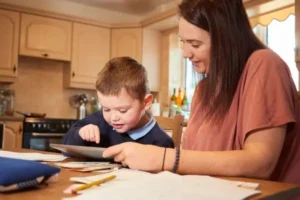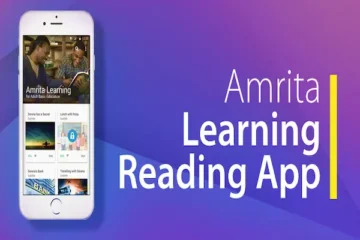How to download reading apps for kids to learn at home
Discover how to download the best reading apps for kids to learn at home and enhance their literacy journey with fun, engaging tools.
Advertising
How to Download Reading Apps for Kids
Reading apps for kids are digital tools designed to make the process of learning to read engaging, interactive, and accessible.
They combine educational strategies such as phonics, vocabulary development, and comprehension activities with interactive features like games, animations, and rewards.
These apps provide children with a structured learning environment, allowing them to practice reading skills in a fun and engaging way.
Downloading these apps is easy, regardless of whether you have an Android or iOS device.
Many reading apps are available for free on the Google Play Store and the Apple App Store, with the option to unlock additional content through in-app purchases.
The apps cater to different age groups and skill levels, so parents can find one that best suits their child’s needs.
[related]
Step-by-Step Guide to Download Reading Apps for Kids
Downloading a reading app for your child takes just a few simple steps:
- Open the App Store or Google Play Store: Find the store icon on your device and open it.
- Search for Reading Apps: In the search bar, type “reading apps for kids” or enter the name of the app you want to download.
- Select the Right App: Look through the results, reading reviews and checking the ratings to choose the best app for your child’s age and skill level.
- Download the App: Tap the “Install” or “Get” button to start downloading the app to your device.
- Set Up an Account: Some apps may require you to create an account or set up a profile for your child to track progress.
Once the app is installed, your child can start exploring its lessons, stories, and activities, and you can adjust settings or parental controls if needed.

Basic Information About Reading Apps for Kids
Reading apps for kids are essential tools for supporting early literacy development.
These apps focus on teaching fundamental reading skills through interactive lessons, games, and stories.
The core areas they cover include phonics (letter-sound relationships), sight word recognition, vocabulary building, and reading comprehension.
Many apps offer customized learning paths that adapt to your child’s progress, ensuring that they stay challenged without becoming overwhelmed.
The fun, game-like structure of these apps keeps children engaged, helping them stay motivated to practice their reading skills regularly.
They also provide progress tracking features for parents, so you can monitor your child’s development and make adjustments as needed.
What Is the Functionality?
Reading apps offer a variety of interactive features to make learning engaging and effective. These include:
- Phonics Lessons: Phonics-based activities that teach children how to recognize letter sounds and blend them to form words.
- Interactive Stories: Digital books with audio narration that help children follow along and improve reading fluency.
- Vocabulary Games: Fun activities that introduce and reinforce new words in an interactive format.
- Progress Tracking: Tools that allow parents to monitor their child’s reading development and identify areas for improvement.
- Personalized Learning Paths: Lessons that adapt to the child’s skill level, ensuring they are always challenged but not frustrated.
Are Reading Apps for Kids Free?
Many reading apps offer free versions that provide access to essential features, while more advanced lessons and content can often be unlocked through in-app purchases.
Free versions typically include a good range of lessons and stories to get started, making them accessible to most families.
Are Reading Apps for Kids Safe?
Yes, most reading apps for kids are designed with safety in mind. They generally include features like parental controls to manage in-app purchases and limit screen time.
Additionally, apps that follow child privacy laws, such as COPPA (Children’s Online Privacy Protection Act), ensure that personal data is not collected without consent.
Always check the privacy policy of the app to confirm its safety features.
What to Expect from a Reading App for Kids
Reading apps for kids are designed to make learning fun and effective.
They are packed with interactive elements that help children develop literacy skills at their own pace.
Here’s what you can typically expect from these apps:
- Interactive Stories: Kids can read along with digital stories that include visual and audio support to help them understand the text.
- Phonics Games: Games that teach children how to recognize letters and their corresponding sounds, an essential skill for early reading.
- Daily Challenges and Rewards: Some apps offer daily tasks or challenges that reward children with badges or stars, keeping them motivated.
- Personalized Lessons: The app adjusts the difficulty level based on your child’s progress, ensuring that they remain engaged and challenged.
By offering a wide variety of interactive lessons and stories, reading apps make it easier for children to practice regularly while also having fun.
Pros and Cons of Reading Apps for Kids
Pros of Reading Apps for Kids:
- Engaging Learning Environment: Reading apps incorporate games, animations, and interactive features to make learning enjoyable for children.
- Flexibility and Convenience: Kids can practice reading at their own pace, anytime and anywhere, whether at home, in the car, or while waiting at an appointment.
- Personalized Learning Paths: These apps adapt to your child’s reading level, providing lessons that match their current abilities and keep them progressing.
- Cost-Effective Options: Many apps offer free versions or affordable premium features, making literacy development accessible to a wide range of families.
- Encourages Independence: Children can use reading apps on their own, building confidence and autonomy in their learning.
Cons of Reading Apps for Kids:
- In-App Purchases: Some free apps offer additional content through in-app purchases, which may be tempting for children.
- Excessive Screen Time: While educational, too much screen time can become a concern for parents, so it’s essential to set limits.
- Limited Personal Interaction: Reading apps cannot replace the one-on-one attention of a teacher or parent, and children may still need guidance.
- Potential for Distractions: If not properly monitored, children may switch to other apps or games on their device, reducing focus on reading.
Who Should Download These Apps?
Reading apps are beneficial for various types of learners, especially children in the early stages of literacy development.
Here’s a breakdown of who can benefit the most:
1. Young Learners
Reading apps are ideal for young children, typically between the ages of 2 and 8, who are just starting to learn letters, sounds, and basic words.
These apps provide a fun and interactive way to introduce young learners to the building blocks of reading.
2. Parents Looking for Supplemental Learning
For parents who want to supplement their child’s education at home, reading apps provide an excellent opportunity to reinforce literacy skills outside of the classroom.
With structured lessons, interactive stories, and games, parents can feel confident that their child is receiving additional learning support.
3. Families with Busy Schedules
Busy families can also benefit from reading apps, as they allow children to practice reading on the go.
Whether during car rides, while waiting at appointments, or as part of a daily routine, reading apps provide a flexible and convenient way for children to learn anywhere.
Why Download a Reading App for Kids?
Downloading a reading app for your child can have a significant impact on their literacy development. Here are a few reasons why it’s worth considering:
- Access to Quality Content: Reading apps provide children with a wide variety of stories, phonics games, and reading exercises that are designed by educators. This ensures that kids are learning in a structured and engaging way.
- Motivation to Practice: Many reading apps include reward systems, such as earning badges or stars, which encourage kids to practice regularly and stay motivated.
- Customizable Lessons: Reading apps adapt to your child’s learning level, ensuring that they are always challenged but not frustrated.
- Interactive Learning: These apps turn reading into a fun and interactive experience, which helps foster a love of reading and learning.
By integrating reading apps into your child’s routine, you can ensure that they are getting regular practice and building strong foundational skills in reading.
Is It Worth Downloading These Apps?
Absolutely! Reading apps for kids offer an engaging, flexible, and effective way for children to develop their literacy skills.
Whether your child is just starting to learn letter sounds or advancing to reading full sentences, these apps provide the necessary tools to support their growth.
With features like phonics lessons, interactive stories, and progress tracking, reading apps help children improve their skills while having fun.
Additionally, many of these apps are free or affordable, making them accessible to families with different budgets.
By incorporating reading apps into your child’s learning routine, you can give them the extra practice they need to become confident readers.
Reading apps for kids are an invaluable tool for parents looking to enhance their child’s literacy skills.
With their combination of interactive lessons, stories, and games, these apps make learning to read an enjoyable experience.
Whether you’re looking for a supplement to classroom learning or a flexible way to practice at home, downloading a reading app for your child is a great investment in their education.





